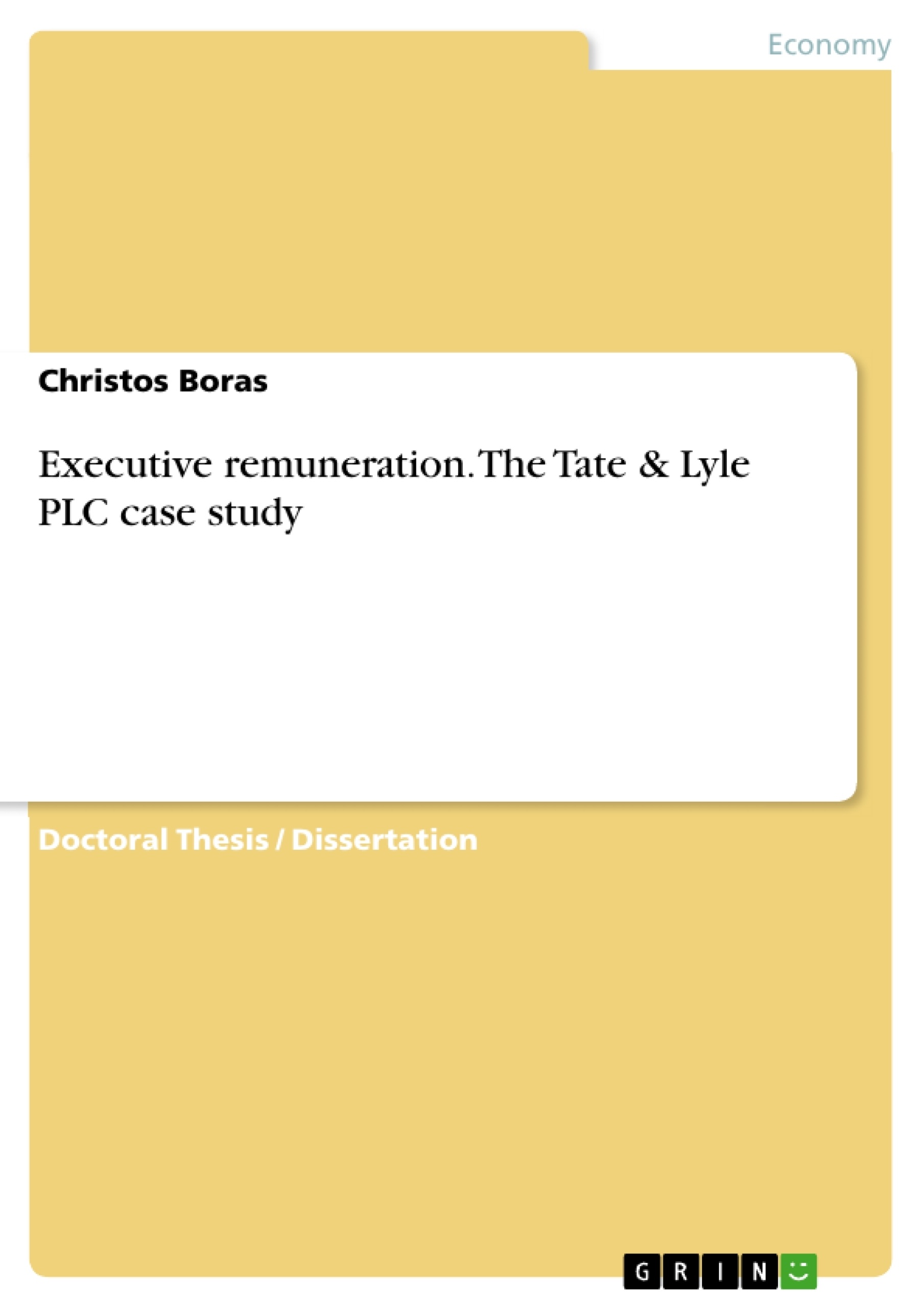This report provides an analysis and evaluation over the executive remuneration issues. The basic issues in this report raised the public debate and the academic literature findings over the misalignment between the pay and performance and the level of executives’ emoluments.
In order to provide a more specific and practical perspective of the issues raised, this project used a case study of Tate & Lyle plc. and its main competitor Associated British Foods plc. Methods of analysis include the review over the UK corporate governance evolution on executive remuneration matters. The second part of the review is based on the academic literature review.
Furthermore, the internal structure of both companies and the level of salaries in the hierarchy give an explanation over the level of the executive emoluments. Moreover, the structure of the executive remuneration is approved in both companies by the majority of the shareholders and there is evidence that the short-term and long-term performance of the companies have an important effect on executives’ salary. Last but not least, there is evidence that the executive remuneration is almost the same across the same industry even if the performance between two companies is different.
The report finds that both companies are in line with UK corporate governance code guidelines and aligned pay with performance. However, there are not adequate case studies through different industries in order to have a more precise information over the relationship between pay and performance of other companies. The major area of weakness on the academic literature is the lack of case studies which can provide more detailed information of practical implementations of the Code and academic literature. Moreover, the institutions and most of the academic research is based on using average figures based on the FTSE100, FTSE250 and FTSE350 Indexes.
The report also investigates the fact that the analysis conducted has limitations. Some of the limitations include the lack of ABF’s annual report for 2014. In order to overpass this difficulty, this project used the annual report of 2013 for both companies. Another limitation was the lack of case studies over the executive remuneration issues based on certain companies rather than the average trend of an Index. Last but not least, there was no other case study of a company over the executive remuneration issues in order to use the methodology.
Inhaltsverzeichnis (Table of Contents)
- 1 Literature Review
- 1.1 Corporate Governance Code evolution
- 1.2 Current Regulations, Reforms and Developments of the Corporate Governance Code 2012
- 1.3 Academic Literature Review
- 1.4 Summary
- 2 The Tate and Lyle plc. and competitor case study
- 2.1 Tate and Lyle plc. overview
- 2.2 Analysis of Tate and Lyle plc. position
- 2.3 Overview over Associated British Foods plc. position
- 2.4 Comparison
- 2.5 Evaluation against literature
- 2.6 Summary
- 3 Summary of findings
- 3.1 Final summary of achievement of structure and aim from introduction
- 3.2 Final conclusion and recommendations
Zielsetzung und Themenschwerpunkte (Objectives and Key Themes)
This report examines the issue of executive remuneration and its alignment with company performance. The study focuses on Tate & Lyle plc. and its main competitor, Associated British Foods plc., to provide a practical perspective on the topic. The analysis delves into the evolution of the UK Corporate Governance Code and its impact on executive remuneration practices. The report also explores key themes from academic literature concerning executive compensation, including pay-for-performance, the role of remuneration consultants, and the internal structure of remuneration packages.
- Corporate Governance Code Evolution
- Executive Remuneration Practices
- Pay-for-Performance Alignment
- The Role of Remuneration Consultants
- Internal Structure of Remuneration Packages
Zusammenfassung der Kapitel (Chapter Summaries)
Chapter 1 presents a comprehensive review of the UK Corporate Governance Code, tracing its evolution from the Cadbury Report to the 2012 Code. The chapter examines key developments, regulations, and reforms influencing executive remuneration practices over time. The analysis also explores relevant academic literature regarding executive compensation structures, pay-for-performance linkage, and the role of remuneration consultants.
Chapter 2 delves into a case study of Tate & Lyle plc. and Associated British Foods plc., comparing their financial performance and executive remuneration packages. The analysis includes ratio analysis, a review of remuneration reports, and a detailed comparison of CEO and CFO compensation. The chapter concludes by evaluating the findings in light of the literature review.
Schlüsselwörter (Keywords)
The key themes of this report revolve around executive remuneration, corporate governance, pay-for-performance alignment, remuneration consultants, and the internal structure of compensation packages. It utilizes case studies of Tate & Lyle plc. and Associated British Foods plc. to investigate these key concepts within the context of UK Corporate Governance Code regulations and academic research findings.
- Arbeit zitieren
- Christos Boras (Autor:in), 2014, Executive remuneration. The Tate & Lyle PLC case study, München, GRIN Verlag, https://www.grin.com/document/459102



